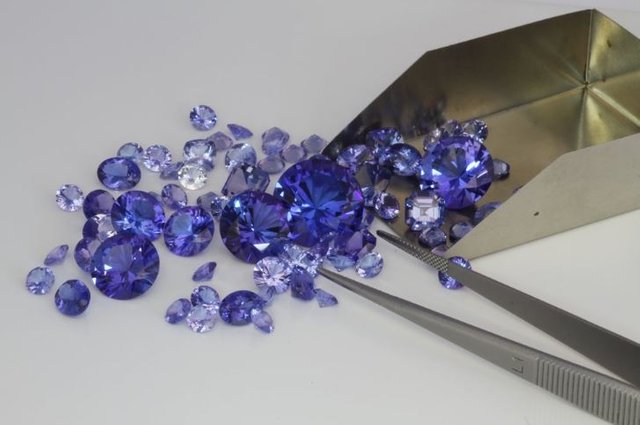World's RAREST Gemstones and Minerals Ever Seen
1 Tanzanite
This incredibly excellent, blue variety of zoisite, a mineral, is found in one zone, and a little territory it is. Goodness, and we neglected to make reference to that the zone in which they are found is at the base of Mount Kilimanjaro! It wasn't until the 1960's that the valuable stones were found in business amounts, so up to that point it was an extremely obscure thing. Be that as it may, on account of Tiffany and Co, the prominence of tanzanite has developed considerably. Most tanzanites are warm treated to enhance and draw out their blue tinge; be that as it may, any un-warm treated, normally solid blue-hued stones merit a pretty penny! Some time or another Tanzanite, similar to all tanzanite, will most likely be worth that pretty penny too, considering right now it just originates from one area on the planet, and once those mines are drained, there will be no new tanzanite hitting the market. So on the off chance that you are very brave, clutch it, and implore that it never springs up somewhere else on earth!
- Painite
In 1951, British geologist, Arthur Charles Davy Pain, found painite, however it wasn't until 1957 that it would be authoritatively perceived as another mineral. When it was affirmed as new, it was named after him, as is by all accounts the custom of revelation. It's comprised of aluminum, oxygen, boron, zirconium, and aluminum, and it likewise contains modest measures of vanadium and chromium, which give it its shading. It was really the rarest gemstone in the whole world for quite a while considering there was just a single known example in the whole world, and it was kept in the British Museum in London. After some time, an ever increasing number of gemstones were found, and by 2004, there were a cluster; be that as it may, the number still did not surpass two dozen. In later years, mines in Myanmar have created painite, and the known number of stones is currently more like 1,000, yet it's still extremely uncommon. Stones tipping the scales at only one carat can go for more than $60,000, making it one looked for after gemstone.
3 . Grandidierite
Along these lines, this rare stone was first found in Madagascar by one Alfred Lacroix, a French mineralogist, who at that point proceeded to depict it in 1902, and named it out of appreciation for Alfred Grandidier, a French pioneer who was a specialist in Madagascan history. It has been found in different places all through the world; be that as it may, just stones that have originated from Sri Lanka and Madagascar have delivered stones that are diamond quality. Most grandidierite are translucent, however the rarer examples are progressively straightforward, with the most profitable being entirely straightforward. The gemstone was really mistaken for serendibite, another stone, on the grounds that grandidierite of that straightforwardness and shading had not yet been seen. A specialist completed an investigation and affirmed that it was, truth be told, grandidierite, and the diamond was sold for an undisclosed measure of cash. Wouldn't you simply love to have a stone you believe would one say one is thing and afterward it ends up being one significantly increasingly uncommon and progressively important? The fortunes of a few people… .
4 . Red Beryl
This delightful, uncommon little gemstone is, indeed, so uncommon that the Utah Geological Society gauges that only one example is revealed per each 150,000 jewel quality precious stones. It used to pass by the name red bixbite and was first promoted as a red emerald. Utilizing the term emerald to move the beryl today is precluded considering the red beryl isn't an emerald, despite the fact that the emerald is an assortment of beryl. Unadulterated beryl itself is altogether lackluster, and the pearls just gain shading through polluting influences inside; manganese within a beryl will give it a red tinge, making the red beryl that is discovered just in Mexico, New Mexico, and Utah. They are commonly too little to be in any way cut and utilized and for the most part weigh not exactly a carat. Any red beryl gauging more than a few carats would be viewed as a remarkable stone and would be worth a lot thinking about its irregularity. It's uncommon, as well as it's excellent. Too awful we'll most likely never observe one face to face!



